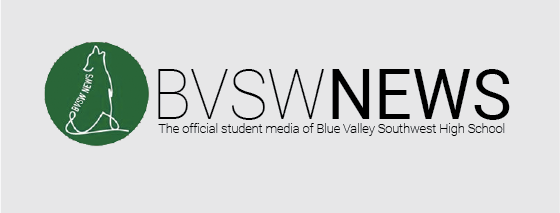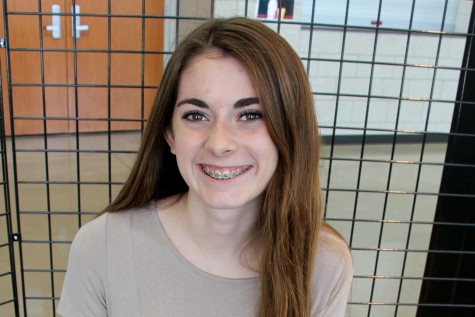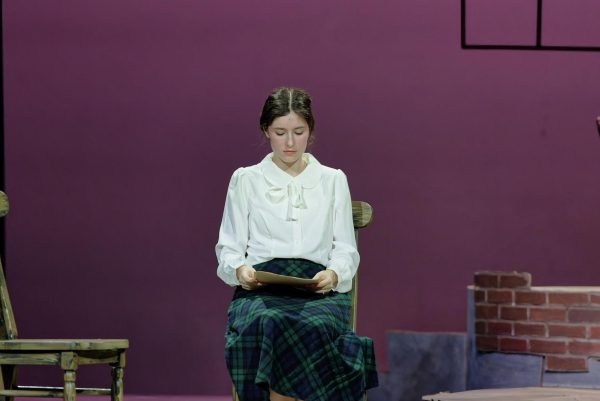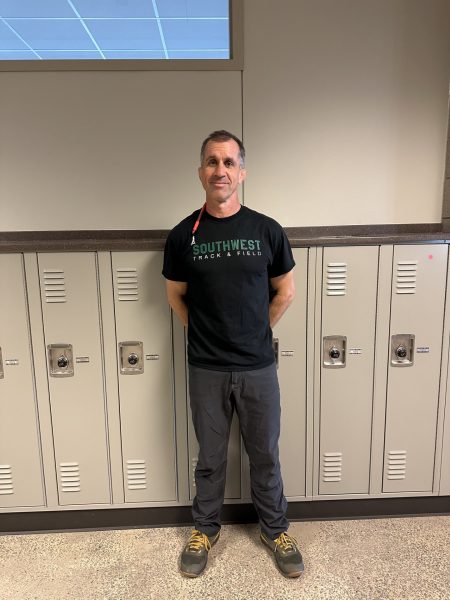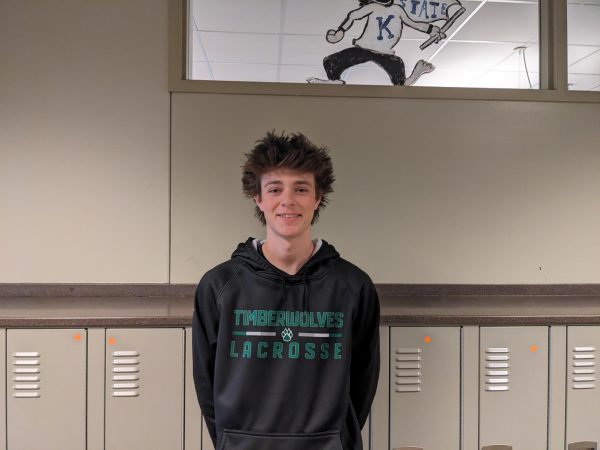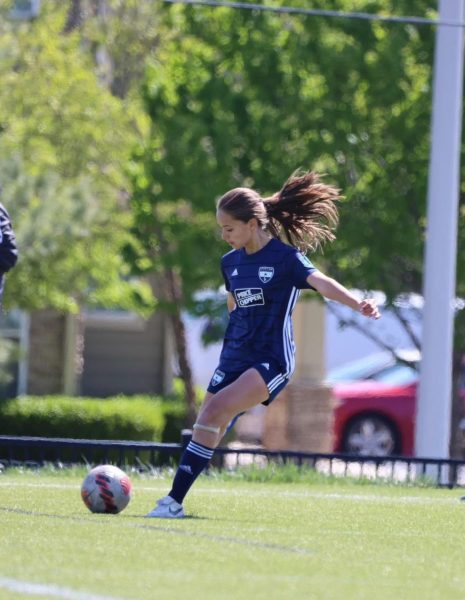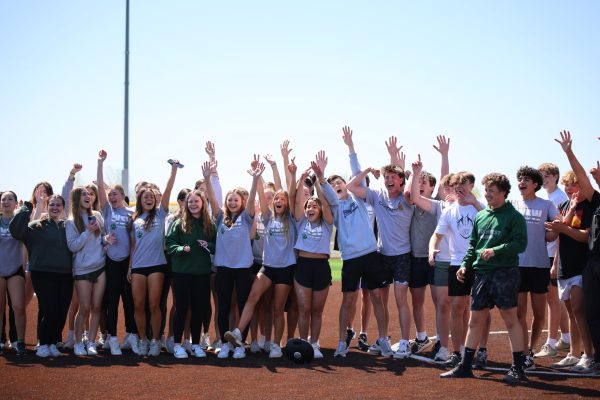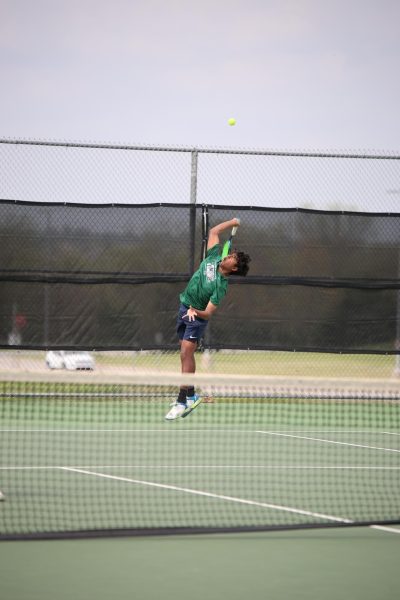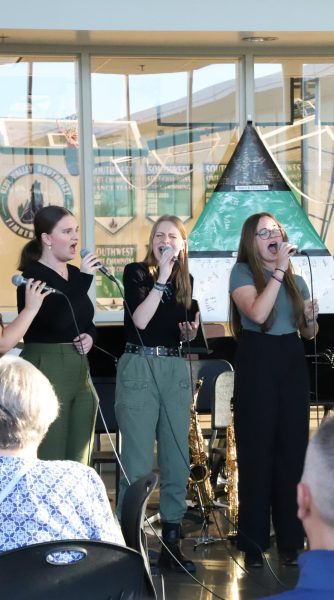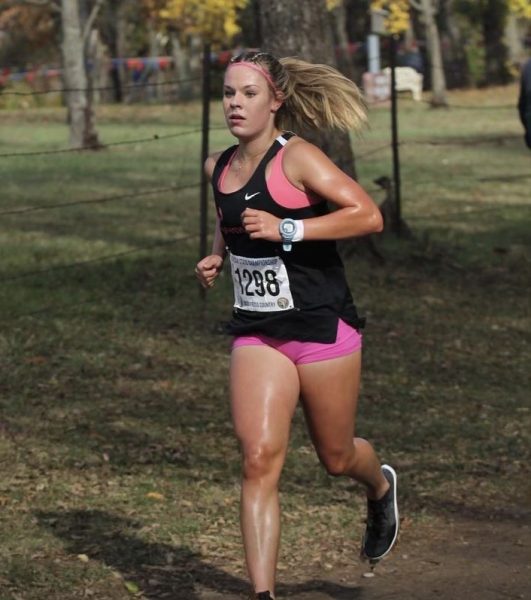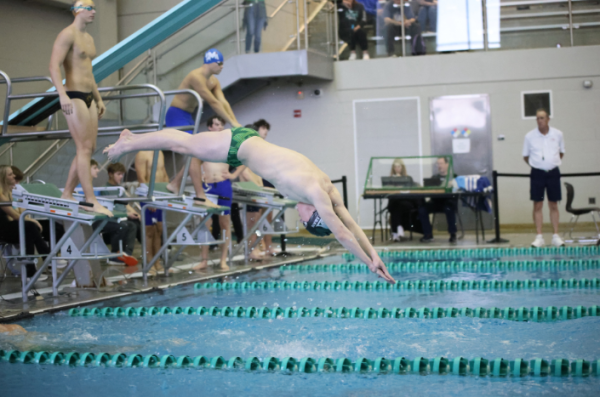Junior Evan Haas finds his passion in the air
Stepping onto the plane, junior Evan Haas begins analyzing each part of the plane to verify it is ready for take off. Starting with the flight control surfaces, Evan then examines the lights, fuel, oil, engine compartment, the fuel levels and fuel sump. Finally sitting down, Evan switches on the master switch, primes the engine, calls “clear prop” out the window and turns the engine over. Each step is essential to the process as Evan guides the airplane down the runway and into the air.
“I get jitters at the beginning because there are so many things that have to be done to go off the ground and get the airplane prepared to fly, but once I am up in the air, I get really relaxed,” Evan said. “You get an awesome view, and once you get outside of the airport’s traffic, there is not really much going on,”
Evan began working over the summer with his instructor, Matt Miller, who has been teaching private, instrument, commercial and various other courses since 1979. As a flight instructor, Miller said he has found joy in watching his students fly solo for the first time, and he appreciates the rewarding feeling when his students receive their certificates.
“Some of my scariest moments have not been instructional flights but ones in bad weather alone by myself with that new certificate and not much experience,” Miller said. “So this is one reason I still teach, I’m trying to make it better for the next group so they won’t have to suffer that kind of terrifying experience that I had at first.”
When he receives his license, Evan will be able to fly anywhere he would like with as many passengers as he would like in a single engine, non-turbo plane. Evan is on the first of three main phases in receiving a private pilot license. The first, pre-soloing, involves learning the airplane. The second phase is cross-country flying and the techniques involved with using the airplane for travel. The last phase prepares the pilot for the flight test with a final review, which can take between four to six months.
Becoming a private pilot requires a minimum of 40 hours of flying time, but Evan said the national average of flight time needed to receive a pivot pilot license is approximately 71 hours. Evan is also required to complete broad amounts of reading material, including the private flying handbook and the technical handbook, and memorize all safety procedures for his specific plane. Miller predicts it will take Evan 50 hours of flying time to become certified, but Evan doesn’t see it as work.
“I like learning about it because it is a subject I am really interested in,” Evan said. “I like learning about all the weather and the technical aspects of the plane and how everything works in it, which really fits along with my passion of being an engineer. I find it a lot of fun, and I would love to dedicate more time to it.”
At first, Evan was skeptical about whether or not he would enjoy flying. Evan described his first time in the pilot’s seat as overwhelming with juggling the strict procedures, talking to the tower with the correct lingo and actually flying. However, after some getting used to, Evan has found a passion in flying.
“When I started flying and was in the pilot seat, I kind of caught the bug and I have loved it ever since,” Evan said. “I always thought it would be just a little hobby, but then it turned it into a passion.”
Evan has been fascinated by airplanes since he was little, though he didn’t think about becoming a pilot until he flew with his dad, Tim Haas, who allowed Evan to occasionally take over the controls. Tim has had an interest in flying since he was young as well, but was not able to commit to it until the age of 42, when he decided to pursue his license in order to help with his business travel schedule. Tim said he not only enjoys the fast travel time and the hospitality in small airports, but also the freedom of flying.
“Once you have experienced the freedom of traveling in a private airplane, you definitely do not look forward to flying commercial,” Tim said.
The Haases have had opportunities to experience things many other people who regularly fly with commercial airlines do not, such as circling around and seeing Mount Rushmore up close, flying through the Rocky Mountains and landing at the airport located at the highest altitude in the U.S. Likewise, rather than dealing with the stress of commercial airlines, the Haases have appreciated the experience of smaller airports.
“Going to small airports, which are really nice and crazy-homey, there are people that come out to you and help you off the plane and ask what they can do,” Evan said. “And they love talking about flying. It is really cool and an awesome environment.”
Evan and Tim have always been close and shared many interests and views, but now they experience the mutual enjoyment of flying. They often discuss Evan’s training and have grown closer through Tim’s interest in Evan’s work.
“I love that Evan is excited and challenged with the pursuit of his license,” Tim said. “This has given us one more common interest and it has brought us closer together.”
Though there are risks that come with becoming a pilot, Tim said he believes with the proper training, flying can be a safe and fun hobby. He understands that Evan’s job is to make proper pilot decisions, and he trusts Evan to do so. However, on his first flight, the collection of decisions proved to be stressful.
“My first flight was overwhelming, but it was a ton of fun, and I decided I loved it right then,” Evan said. “It’s a whole different experience riding in a plane and being a co-pilot with my dad than when you have the controls, knowing that you have the freedom to go anywhere you want.”
Before Evan finishes his training, he will be required to do a cross-country flight. This entails three different legs and more than 50 miles covered each leg. Tim said he is most excited for his chance to be the “right-seated rider,” otherwise known as the co-pilot, on family vacations and for Evan’s chance to meet new people while he enjoys his freedom to travel in a small airplane.
“I am looking forward to being able to sit in the right seat relaxing and reading a paper or watching a movie while Evan is the left seat with the responsibilities of pilot in command,” Tim said.
When Evan completes his private pilot lessons and receives his certification, he hopes to begin working on his instrument certification which enables him to fly in adverse weather conditions. At some point down the road, Evan also aspires to receive a single-engine sea add-on, which will allow him to land in the water in places where there are no airports to land. Evan ultimately aspires to volunteer with the Angel Flight Program.
“This is a volunteer organization that provides free air transport for people needing medical care or treatment but do not have easy access to medical facilities and cannot pay for the transport needed,” Evan said. “People needing treatments such as surgery, chemotherapy, dialysis or other medical needs can be transported through this organization of pilots at no cost to them. It’s really an amazing organization that I would love to be a pilot for and donate my time to.”
Along with volunteering, Evan is looking forward to his future with his pilot license. With the numerous uses for his certification, Evan said he is eager for the opportunities his passion will bring him.
“[My favorite part about flying is] the freedom of it, there are no stop signs in the sky,” Evan said. “You can go anywhere you want whenever you want without having to check your bags or go through TSA. I love to travel and see new things that are off the beaten path, so I feel that flying is a great fit.”
